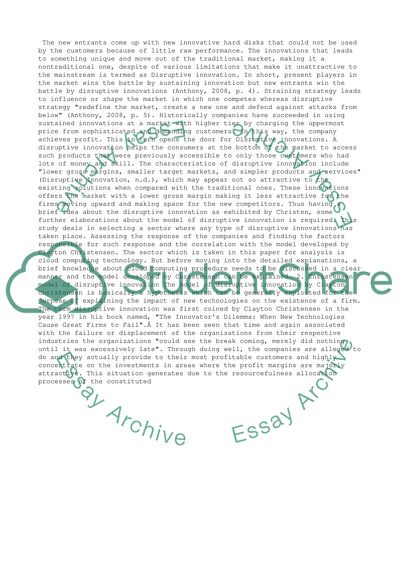Cite this document
(“Disruptive Innovation Essay Example | Topics and Well Written Essays - 4000 words”, n.d.)
Disruptive Innovation Essay Example | Topics and Well Written Essays - 4000 words. Retrieved from https://studentshare.org/management/1466364-disruptive-innovation
Disruptive Innovation Essay Example | Topics and Well Written Essays - 4000 words. Retrieved from https://studentshare.org/management/1466364-disruptive-innovation
(Disruptive Innovation Essay Example | Topics and Well Written Essays - 4000 Words)
Disruptive Innovation Essay Example | Topics and Well Written Essays - 4000 Words. https://studentshare.org/management/1466364-disruptive-innovation.
Disruptive Innovation Essay Example | Topics and Well Written Essays - 4000 Words. https://studentshare.org/management/1466364-disruptive-innovation.
“Disruptive Innovation Essay Example | Topics and Well Written Essays - 4000 Words”, n.d. https://studentshare.org/management/1466364-disruptive-innovation.


